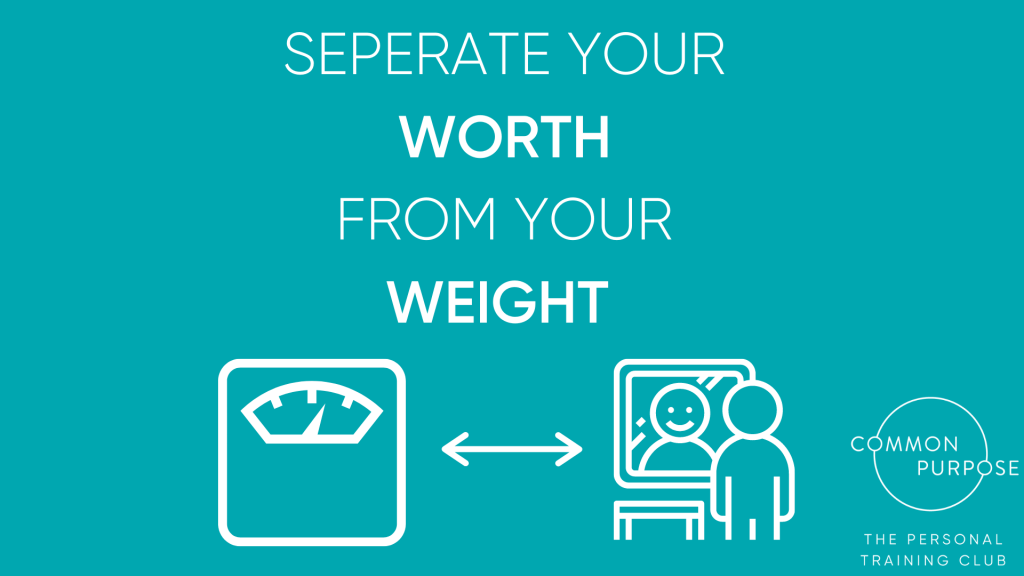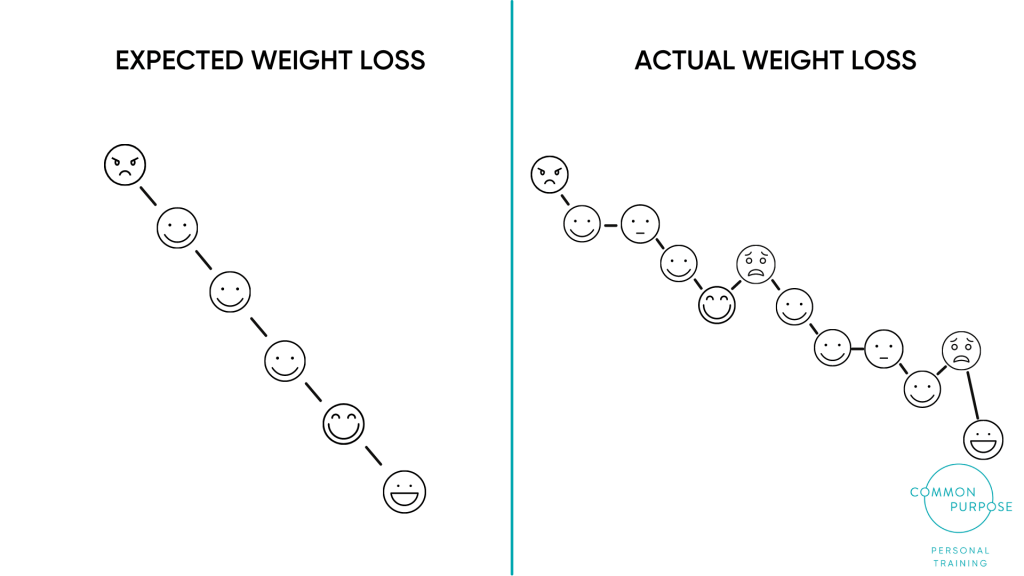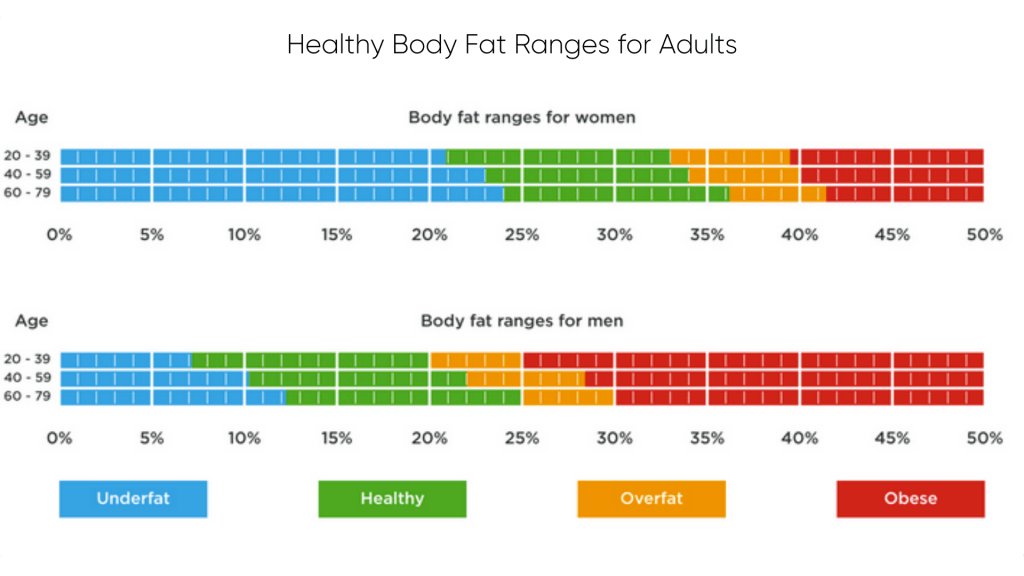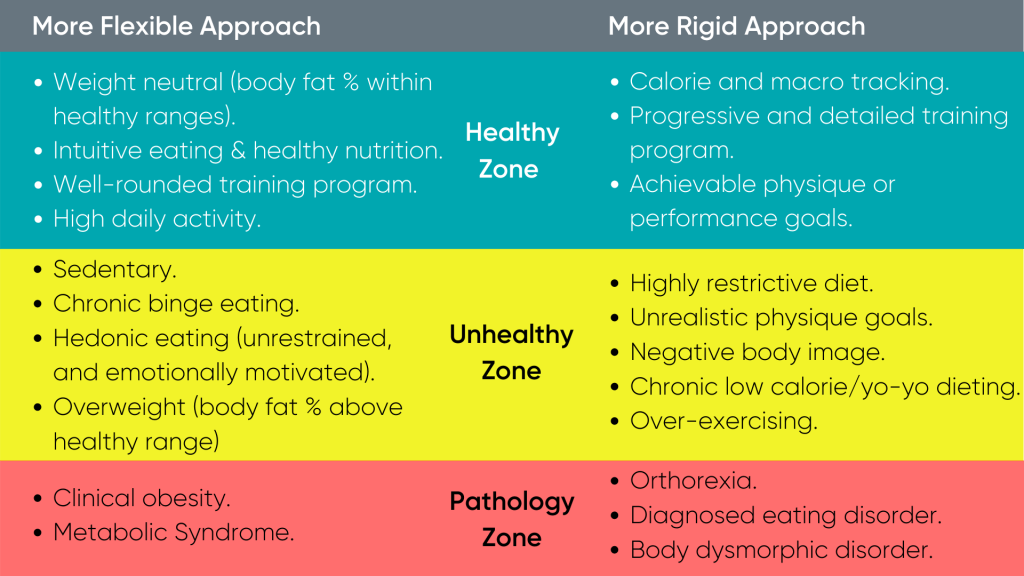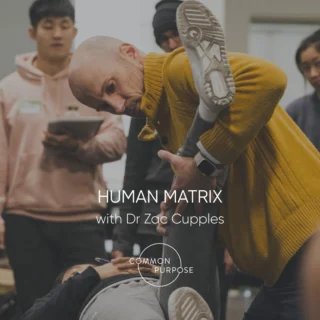Approximately 10mins Reading Time
Brief Article Overview
- Although training for aesthetics (body shape and size) shouldn’t be the only reason to engage in exercise and healthy nutrition, weight loss and body transformations can significantly improve physical health and self-confidence.
- When working with clients we may need to challenge certain assumptions and set realistic expectations when it comes to healthy weight loss and body transformations.
- Scale weight is a useful health marker for those who are overweight and sedentary but is less reliable for leaner, more active individuals.
- Healthy ranges for body fat are wider than most people think and some body fat is required for optimal health.
- We should be aware of the sacrifices required to achieve very lean physiques.
- When coaching clients, our approach can be either more flexible or more rigid depending on the client’s goals, personality and lifestyle.
- Both flexible and rigid approaches are healthy in their own way but can become unhealthy if taken to extremes.
Introduction
In a previous article, we described the Health at Every Size (HAES) movement, in terms of its principles and interpretations. Some HAES advocates don’t believe that the pursuit of weight loss or body transformations are a healthy or worthwhile endeavour.
They argue that the desire to lose weight stems from arbitrary, culturally constructed standards for health and beauty. Because of this, an oppressive “diet-culture” is imposed onto overweight or obese individuals using weight stigmatization as a form of coercion. Some also believe that weight and health are not synonymous.
We see this position as a backlash against a health and fitness industry that is highly focused on weight loss as the sole reason to exercise and eat well. An industry that is currently failing overweight and obese individuals. HAES rightly identifies the “moralisation of weight” and the prescription of chronic dieting is both unhelpful and unhealthy.
As a personal training club, we work with many clients who want to lose weight and improve their physiques. We have extensive experience in the physical and psychological processes involved in achieving such goals. If our clients are able to separate their sense of worth from their weight, by decreasing the emotional impact of the number on a scale, then weight loss and body transformation goals can be healthy and extremely positive.
Today we will provide you with our position within the health and fitness industry, as it pertains to healthy weight loss and body transformations, and describe the rationale behind our approach with clients who come to us with these goals.
 Common Purpose Team
Common Purpose Team